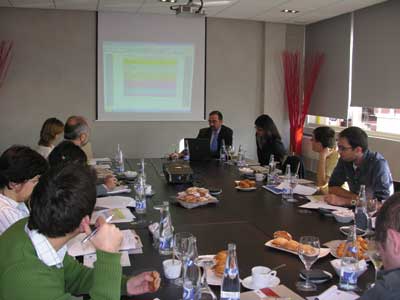The new legal framework promotes savings in energy consumption and reduces CO2 emissions
Newly constructed buildings must apply the requirements of the new energy efficiency directive from today
on October 31, 2007
October 31 is the proposed date for the start of the period of mandatory application of the new directive laying down the procedure and the methodology for calculating to follow to obtain the rating of energy efficiency in buildings in new construction. This legal scenario and for the first time in the inmobliario sector, establishing commitment to inform in a clear way, objective and transparent to purchasers or users on the technical characteristics of the buildings, and to promote buildings that contribute to energy savings.
The legislation affects new construction buildings and buildings undergoing major refurbishment with a useful area exceeding 1,000 square meters, in which be renewed more than 25 per cent of the total of your space. Buildings account for 40 per cent of the total of European energy demand. The role of the building in the environmental balance is especially relevant. This is accomplished by investing in sustainable, environmentally-friendly buildings with the environment and that generate fewer emissions of CO2, the main cause of the greenhouse effect.
Josep Solé, Technical Director of
Ursa Iberian insulators, flailed in a presentation to the media the most essential features of this new energy efficiency policy. Solé explained that "it is that the buildings have a certificate where on a scale from A to G you have idea of how it behaves the building". Thus, the new legal regulations, preceded by Directive 2002/91/EC of 16 December 2002, requires all buildings to provide an indication of its power quality considering the effectiveness of the envelope (isolation), infiltration / ventilationlighting (not residential), hot water, the efficiency of the systems and the incorporation of renewable energies.
Energy label
This technical information is materialized in a label energy, similar to that used in other consumer goods such as appliances or lighting lamps. This includes values from A to G (from higher to lower energy efficiency) and allows you to evaluate and compare the energy performance and the level of CO2 emissions from buildings, provided the user new criteria for the purchase. Class A represents 75 percent of savings, class B represents a 60 percent savings and class C 35 per cent. Classes D and E are the strict regulations, while the F and G types would be outside the law to not meet the minimum requirements of the technical building code (CTE).
Also the decree by which implements the energy certification requires promoters of buildings to include this tag in the elements of information, promotion, offer and contract of the building so that users have these data from the beginning and have taken into account in their purchase decision. For its part, public buildings or institutions that provide services to a significant number of people must display the distinctive prominently as an exemplary measure.
The Technical Director of Ursa Iberian insulators placed special emphasis on the fact that against what may seem a priori, the achievement of high class does not represent an envelope important cost. To achieve this, the concept of energy efficiency must be integrated at the time in which the building is projected establishing from the beginning the qualities necessary to achieve the desired level of energy efficiency. Josep Solé, stated that "the user should see it as an initial investment which will recover after easily through savings in energy consumption in your home".
Advantages and disadvantages
With the information collected on the energy label, the user can assess and compare the energy performance of buildings with an objective criterion and thus decide if it fits your needs. Furthermore, developers can use this information as a selling point since it is an added value allowing them to differentiate their products, without this I suppose an envelope additional cost.
The new directive energy efficiency defined as energy efficiency of a building energy consumption which is estimated to be necessary to meet the demand of the building under normal conditions of operation and occupation. This effectiveness is determined according to a methodology of calculation and is expressed with energy indicators (based on CO2 emissions) by the energy label. It should collect information concerning the type and the name of the building, the town where you are located as well as the climatic zone belongs as set forth in the CTE, the use of the building, the annual energy consumption, the annual CO2 emissions, the practice of certification, a reference to distinguish whether it's the energy efficiency of the project or the finished building rating and, finally, the validity of the label.
Josep Solé explains the media features of the new directive for energy efficiency.
Related Companies or Entities
Ursa Ibérica Aislantes, S.A.







